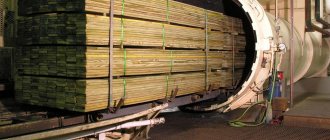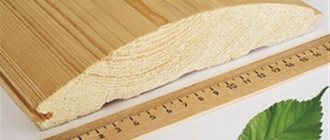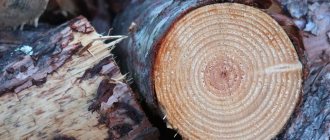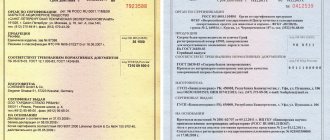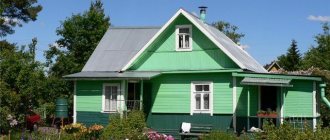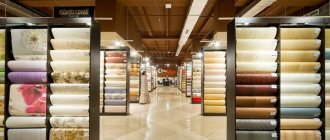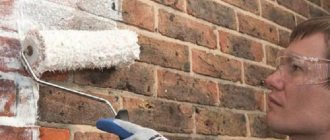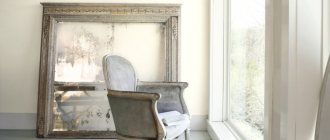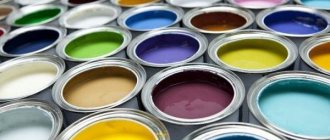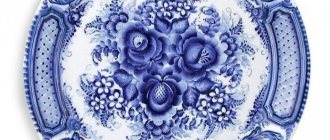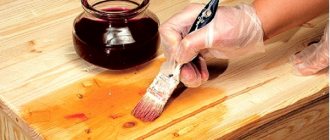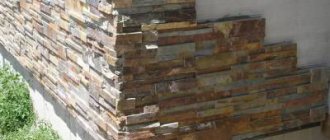Factory quality processing
Any defense has its limits, no matter how advanced methods it is carried out, time will destroy it.
Most companies that produce block houses take care of the reliability of their products, selecting only the best examples. Before releasing parts, manufacturers do not forget to coat the outside of the block house with protective liquids and properly impregnate it with various protective agents. After impregnation, it is not afraid of heat, cold and other weather vagaries, which can not only harm, but destroy the protective layers.
A high-quality block house is already impregnated at the factory
You shouldn’t doubt the quality of the treatment yourself; it’s better not to do anything until the protective layer actually begins to deteriorate. Fortunately, factory-made products can last for more than a decade without additional processing, replacement or repair, so you should only worry about their integrity in incredibly extreme conditions.
Results
If you already know how to paint a block house on the outside and how to paint a block house on the inside, you need to pay attention that these are different types of work.
When starting to paint the exterior, you need to check the weather forecast. The weather should be dry and preferably warm, which will allow the paint to dry in the shortest possible time. Before starting work, the wood should be prepared: cleaned and bleached.
After cleaning, the surface must be primed. To ensure that the paint is distributed evenly, you need to start painting from the top.
- Painting inside.
For interior painting, a more decorative coating, without deep impregnation, is more suitable. Typically, for such purposes, colorless varnish, glossy or matte paints are used, approximately the same shade as the block house itself. Impregnations are also applied shallowly and in one layer. In order for the paint to “take root” well, the inner surface should also be primed.
Treatment of unimpregnated block house
Perhaps you were lucky enough to purchase a block house without impregnation. Then it will need to be treated with several liquids that will improve its quality and protect it from insects, fungus and mold.
If you are wondering how to treat the outside of a block house, one of the simplest options is to cover the entire surface with varnish. It is worth considering that such protection is not complete and cannot even be compared with impregnation. A layer of varnish will last no more than two to three years, taking into account mild weather conditions. After the first layer becomes unusable, it will be necessary to clean the block house from the old varnish in order to apply a new one. Therefore, this method should be used only if there are no other options.
Dark impregnations look best on the outside
The highest quality treatment of a blockhouse outside the building is carried out with special liquids that are designed to protect the wood from adverse conditions. Impregnation is an excellent means of protection here. Moreover, it is worth trying various impregnations to improve the mechanical qualities of the wood. There are many different ways to ensure good protection of a wooden structure by impregnation:
- To protect against rodents and other possible mechanical damage, it is recommended to use alkyd impregnations. They have a rather pungent odor, so the processing process should be carried out in a separate room. This type of impregnation will improve the mechanical properties of wood for a very long time.
- To improve the decorative properties of a block house, it is recommended to use impregnating oil liquids with tinting. They will help maintain the initial appearance of the structure for a very long time, and they also emphasize the texture of the wood.
There are special acrylic water-soluble impregnations. They do not have a pungent odor and do not emit toxins, so they are most often used to treat interior linings, but they are not durable.
Features of the material
To improve the quality of natural material, manufacturers try to process it at the initial stages. For example, a rounded log is fed into autoclaves, where under high pressure it is impregnated with chemicals not only outside, but also inside throughout its entire thickness. Impregnation prevents wood from rotting, fire, and damage from harmful insects and rodents. After drying, the logs are sawn (using the square inscribed in a circle method) into beams or boards and four block house segments. The panels are then primed and sold in hardware stores by the meter. The user can only attach the slats to the sheathing and paint with a finishing layer of paint or enamel. Treated panels are somewhat more expensive, but they do not require preliminary preparation before installation.
The service life of such material is approximately 12-15 years, and repair work consists of updating the decorative layer.
How to treat a block house if it was received raw? There is simply no definitive advice for finishing exterior carpentry. This material is very specific, capricious, of biological origin (and different breeds have their own characteristics), which means it suffers differently from moisture or drying out, ultraviolet rays, mechanical stress, pests, drying conditions and speed, and other factors.
Initially, it is necessary to study the condition of the wood (since most buildings turn gray and are affected by pests even at the construction stage), then select the necessary paints and varnishes. Treat the planks, sheathing and base (if it is also wooden) before facing, let it soak well, attach and paint with a decorative layer. So it is quite possible to cover a block house with high quality with your own hands and it will last no less than one processed in a production environment.
Expensive processing
To protect a new design from most risks, it is necessary to use only proven and best materials.
Don't know what to paint the outside of a blockhouse with? One of the most popular methods is the use of azure. This special composition can be mixed with the tint and then applied to the wood surface.
Unfortunately, it is quite difficult to accurately guess the shade that will result, but it is guaranteed to change the color of the wood. It is better to conduct several experiments before using such a mixture on the main structure. In addition, glazes perfectly protect wooden structures, give expressiveness to the texture and withstand various temperature and weather influences for a very long time.
Manufacturing processing
Most manufacturers who produce block houses for exterior wall decoration try to improve its quality as much as possible. For this, various coloring, antiseptic and water-repellent impregnations are used.
The entire processing process takes place in large industrial machines (pressure chambers), since it is quite difficult to do such work manually. This technology allows the composition to penetrate deep into the wood and maximally protect the building material from fire, rot and harmful insects.
The production processing of a block house is divided into several stages:
- First, the manufacturer chooses what to paint the block house with; this can be either impregnation or a decorative coating, for example, paint.
- This is followed by the displacement of moisture and air from the prepared wooden blocks using a vacuum apparatus.
- After complete drying, a reagent enters the chamber, which will serve as protection for the building material. Under high pressure in a pressure chamber, the logs are impregnated with the composition (the exposure time is selected individually for each type of wood). The depth of impregnation is observed in accordance with established GOST.
- Excess protective impregnation is removed from the chamber, and the house block is subjected to repeated vacuum treatment. In this way, residual moisture can be removed from the surface.
- At high atmospheric pressure and temperature, the protective coating dries completely and is fixed on the blocks.
If you plan to cover the façade of your house with a block house yourself, professionals recommend choosing panels that have already been treated with a protective compound. They are easy to install on the wall surface and do not require additional painting.
Painting a block house
If you really want to radically change the color of the block house, you can paint it in the color that you like. But before you paint the outside of the blockhouse, you should take care of the cleanliness of the surface. The entire wood part needs to be cleaned of previous coatings using sanding machines, a knife, in general, anything that can be used to remove the old layer. After completing the cleaning process, using a roller, begin painting the building. It is best to use a mixture of several layers of paint to make it more durable.
The painting method is chosen depending on the room
For painting, regular wood paint will do, but don’t forget that blockhouse paint is not necessary. If such a structure is painted, the wood texture will no longer be so attractive, and it will not be possible to return everything back.
Processing the block house during its installation
A block house without industrial impregnation will significantly save the family budget. This building material is used to cover walls inside and outside the house. The protective coating can be purchased separately, but it is necessary to take into account that different compositions are required for the facade and panels indoors.
There is no need to buy coverage in advance. First, you should purchase a block house and only then can you decide on the type of protective material. It should also be taken into account that the shelf life from the moment the jar is opened is short. Therefore, check out the color, texture and characteristics of the coating on the advertising stand, and then pay for your purchase.
Final verdict
For factory products, there is no need to carry out any special procedures to improve the quality of wood. All the necessary impregnation for the block house has already been carried out and there is no need to do it again.
If you have obtained parts for a block house without treatment, you will need to carry out an impregnation procedure with special means that will protect the wood from the destructive effects of moisture, small pests, heat, and cold. True, such protection will be many times weaker than the factory one.
There is no particular need to paint the block house, so it is worth choosing the most suitable shade of wood at the purchase stage. The paint itself can spoil the style created by unpainted wood and destroy the created composition.
Opaque materials
Unlike colorless transparent materials, paints visually hide the natural grain of wood.
Video on how to properly protect a wooden facade
Organic solvent paints
This composition of the material has a number of positive characteristics. It is easy to use and has high quality indicators when creating block house coverings. Organic based paints are :
Paints hide the natural pattern of a wooden facade
- oil;
- alkyd;
- enamel;
- acrylic;
- polyurethane.
Water-soluble (water-dispersion) paints
Such paints are used to process wood and give it the desired shade. Their color scheme imitates the colors of various trees . Water-based paints are presented in similar shades of such trees as:
Water-dispersed paints imitate tree species
- oak;
- maple;
- nut;
- cherry;
- mahogany, etc.
| Water-based paints differ from organic solvent-based paints in environmental performance, but they are less resistant to environmental influences. That is why their use indoors is recommended. |
Requirements for the impregnating composition
To protect the finishing material from darkening, drying out, fungus or mold and preserve the beautiful structure of the wood, it must be covered with a protective layer. Impregnating compositions are divided according to their properties:
- Fire retardant - reducing the likelihood of fire. These compounds, applied to wooden panels, with a significant increase in temperature form a film on the surface that prevents combustion.
- Antiseptic - preventing the occurrence of fungi, rot or mold on wood. Some also repel mice and rats.
- Waterproof - preventing moisture and dampness from penetrating into the wood structure of the block house.
- Combined - combining several protective qualities.
For a residential building, it is advisable to purchase combined mixtures that reliably protect finishing panels from fungus, rodents and fire.
Selection rules
When buying a block house made of wood, you should not save money if you want to make a beautiful facade that will last for many years. Therefore, we pay attention to the following points:
- type of wood – lumber from softwood raw materials is suitable for exterior finishing;
- material class - extra or class A are predominantly chosen for the facade;
- packaging – the canvas must be packaged and have the same length and width;
- the absence of any defects on the surface of the block house - this includes mechanical damage, blue spots, gaps or cracks, tar stains, curvatures;
- quality of board drying.
If the material meets all the points, feel free to buy it.
